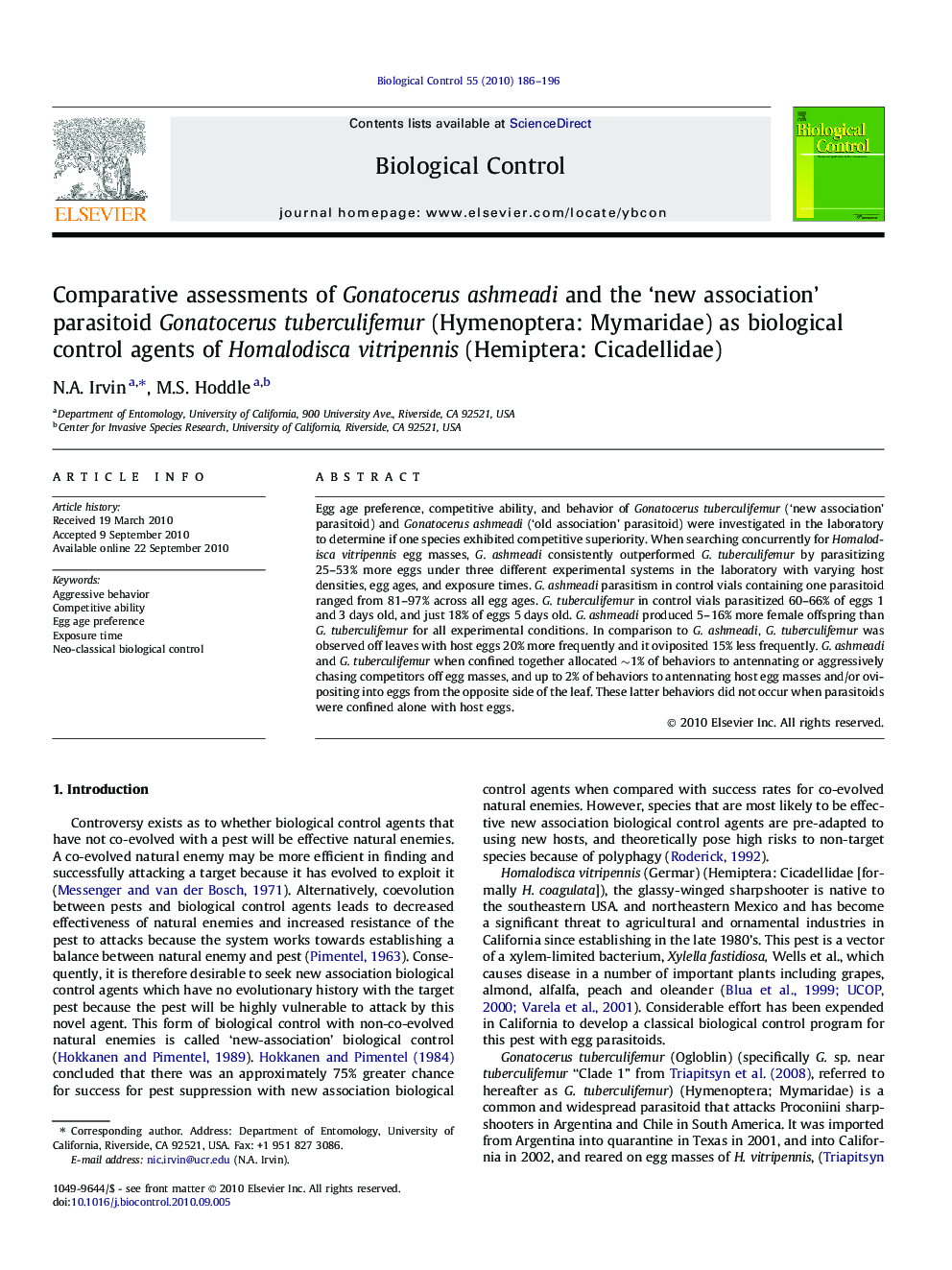| Article ID | Journal | Published Year | Pages | File Type |
|---|---|---|---|---|
| 4504457 | Biological Control | 2010 | 11 Pages |
Egg age preference, competitive ability, and behavior of Gonatocerus tuberculifemur (‘new association’ parasitoid) and Gonatocerus ashmeadi (‘old association’ parasitoid) were investigated in the laboratory to determine if one species exhibited competitive superiority. When searching concurrently for Homalodisca vitripennis egg masses, G. ashmeadi consistently outperformed G. tuberculifemur by parasitizing 25–53% more eggs under three different experimental systems in the laboratory with varying host densities, egg ages, and exposure times. G. ashmeadi parasitism in control vials containing one parasitoid ranged from 81–97% across all egg ages. G. tuberculifemur in control vials parasitized 60–66% of eggs 1 and 3 days old, and just 18% of eggs 5 days old. G. ashmeadi produced 5–16% more female offspring than G. tuberculifemur for all experimental conditions. In comparison to G. ashmeadi, G. tuberculifemur was observed off leaves with host eggs 20% more frequently and it oviposited 15% less frequently.G. ashmeadi and G. tuberculifemur when confined together allocated ∼1% of behaviors to antennating or aggressively chasing competitors off egg masses, and up to 2% of behaviors to antennating host egg masses and/or ovipositing into eggs from the opposite side of the leaf. These latter behaviors did not occur when parasitoids were confined alone with host eggs.
Graphical abstractFigure optionsDownload full-size imageDownload as PowerPoint slideResearch highlights► Gonatocerus ashmeadi consistently outperforms Gonatocerus tuberculifemur in three parasitism studies. ► G. ashmeadi demonstrates a larger host egg age range than G. tuberculifemur. ► G. ashmeadi produces more female offspring compared with G. tuberculifemur. ► G. tuberculifemur establishment in CA may be impeded where G. ashmeadi is present.
